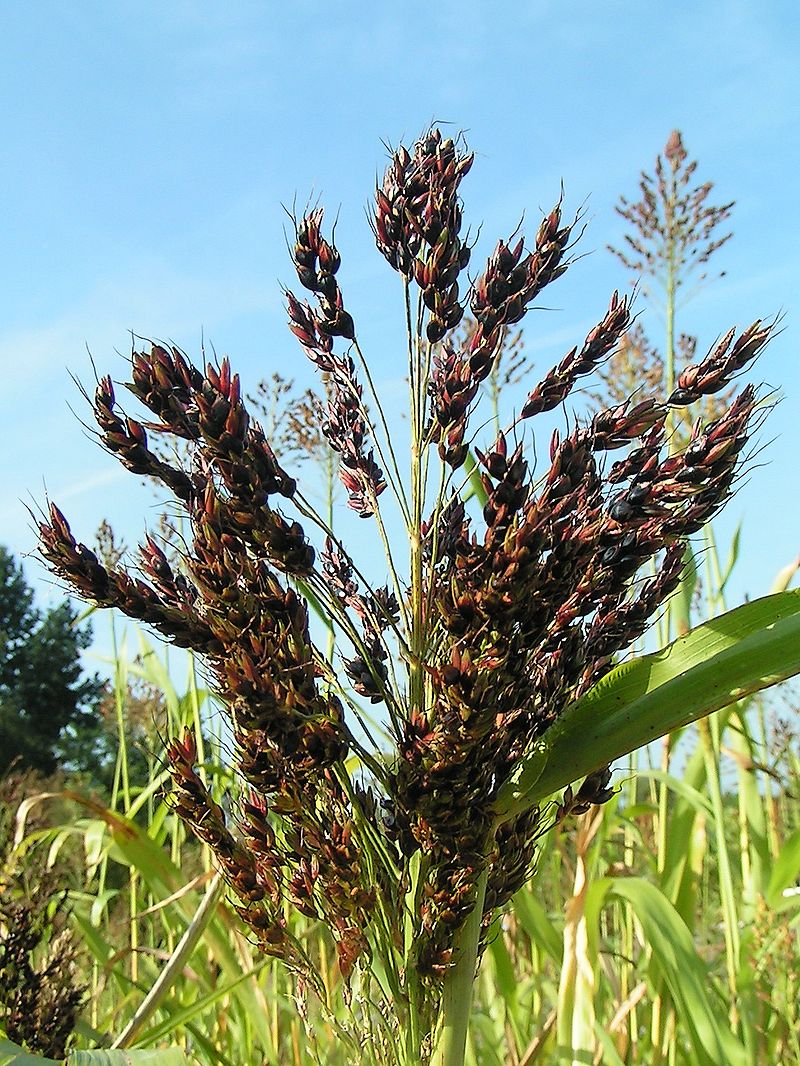Sorghum bicolor
Overview
| Genus | Sorghum |
| Species | bicolor |
| Common Name | Sorghum, great millet, broomcorn, guinea corn, durra, imphee, jowar, or milo |
| Abbreviation | S. bicolor |
| Ploidy | Diploid |
| Chromosome Number | 2n=2x=20 |
| Genome Size | 730 Mb |
| Genome Assemblies | 30 |
| Cross Reference | NCBI taxon: 4558 |
Organism Image

Description
Sorghum bicolor, commonly called sorghum and also known as great millet, broomcorn, guinea corn, durra, imphee, jowar, or milo, is a species in the grass genus Sorghum cultivated for its grain. The grain is used for food for humans; the plant is used for animal feed and ethanol production. Sorghum originated in Africa, and is now cultivated widely in tropical and subtropical regions.
S genes
Sorghum bicolor v3 S genes
| Query | Chromosome | Size(bp) | Coordinates | tBLASTn Hit | tBLASTn %ID | Domain |
| DUF247I-SΨ | CM000769.3 | CM000769.3 | 39942597-39943907 | Pvaginatum | 53 | DUF247 |
| DUF247II-S | CM000769.3 | CM000769.3 | 40147020-40148642 | Shybrid | 68 | DUF247 |
| HPS10-S | CM000769.3 | CM000769.3 | 39548240-39548328,39548478-39548589 | Pnotatum | 47 | - |
| DUF247I-Z | CM000765.3 | CM000765.3 | 58005227-58006798 | Shybrid | 61 | DUF247 |
| DUF247II-ZΨ | CM000765.3 | CM000765.3 | 58014272-58015681 | Shybrid | 57 | DUF247 |
| HPS10-Z | CM000765.3 | CM000765.3 | 58009038-58009114,58009313-58009451 | SspontaneumZ2 | 60 | - |
Downloads
The Sorghum bicolor S gene sequences are available in FASTA format.
| CDS and Protein (FASTA file) | S-gene_Sorghum_bicolor |
Publications
Paterson AH, Bowers JE, Bruggmann R, Dubchak I, Grimwood J, Gundlach H, Haberer G, Hellsten U, Mitros T, Poliakov A, Schmutz J, Spannagl M, Tang H, Wang X, Wicker T, Bharti AK, Chapman J, Feltus FA, Gowik U, Grigoriev IV, Lyons E, Maher CA, Martis M, Narechania A, Otillar RP, Penning BW, Salamov AA, Wang Y, Zhang L, Carpita NC, Freeling M, Gingle AR, Hash CT, Keller B, Klein P, Kresovich S, McCann MC, Ming R, Peterson DG, Mehboob-ur-Rahman, Ware D, Westhoff P, Mayer KF, Messing J, Rokhsar DS. The Sorghum bicolor genome and the diversification of grasses. Nature. 2009 Jan 29;457(7229):551-6. doi: 10.1038/nature07723.